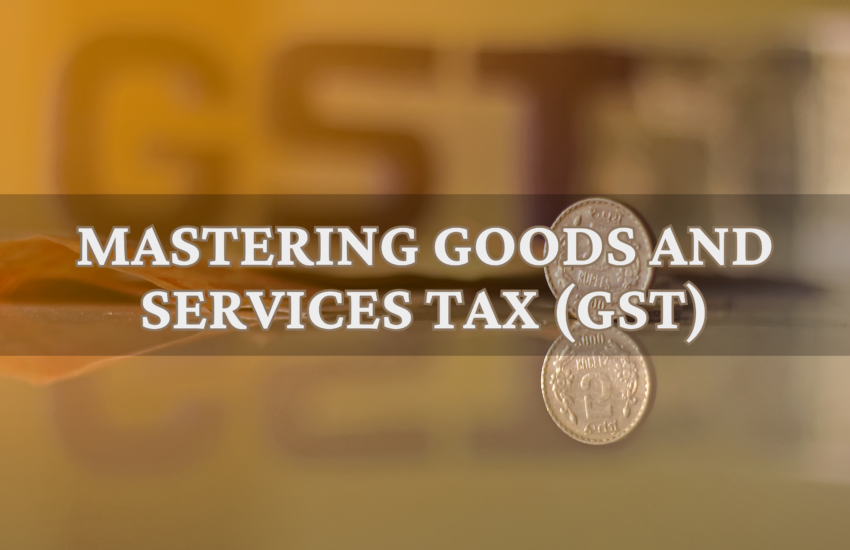Introduction
The introduction of Goods and Services Tax (GST) has revolutionized the tax landscape for businesses globally. This all-encompassing and unified tax system, embraced by numerous countries, aims to simplify and streamline indirect taxation foster sustainable economic growth, and bolster tax compliance. However, navigating the intricate complexities of GST can be an overwhelming challenge for businesses, especially those unfamiliar with its intricacies. In this blog post, we will explore essential tips and strategies to empower businesses in mastering the GST framework and ensuring seamless compliance and optimizing their operations for maximum efficiency and profitability.
Understanding the Basics of GST
To effectively navigate the complexities of GST, businesses must first grasp the fundamental concepts and principles underlying this tax system. GST is a value-added tax levied on the supply of goods and services, replacing multiple indirect taxes like excise duty, service tax, and VAT. It is characterized by a dual structure, comprising the Central GST (CGST) and the State GST (SGST) separating the two components. Additionally, an Integrated GST (IGST) is levied on inter-state supplies. It is important for businesses to familiarize themselves with the GST registration process, tax rates, and the rules governing input tax credits in order to establish a strong foundation in GST compliance.
Ensuring Proper Classification and Valuation
Accurate classification and valuation of goods and services are crucial for determining the applicable GST rates and complying with the tax regulations. It is imperative for businesses to meticulously assess their offerings to ascertain the appropriate HSN (Harmonized System of Nomenclature) or SAC (Services Accounting Code) for goods and services, respectively. Additionally, careful attention should be given to determining the accurate value of supplies, taking into account factors such as discounts, packaging, and incidental expenses. Any misclassification or incorrect valuation can result in compliance issues and potential penalties. Therefore, businesses must exercise due diligence in ensuring proper classification and valuation to maintain GST compliance.
Implementing Robust Accounting and Reporting Systems
Ensuring meticulous accounting records and implementing robust reporting systems are vital for achieving GST compliance. It is crucial for businesses to invest in reliable accounting software capable of efficiently capturing and tracking GST-related information. This entails maintaining records of all purchases, sales, and expenses, along with the corresponding GST details. Regular reconciliation of GST data with financial records is crucial to identify and rectify any discrepancies promptly. By automating these processes, businesses can streamline their GST compliance efforts and minimize the risk of errors contributing to a more efficient and accurate reporting system.
Leveraging Technology for GST Compliance
In the era of advancing digitization in tax systems, technology can play a role in simplifying GST for businesses. The GST Network (GSTN) portal offers a range of online services, including registration, return filing, and tax payment. It is imperative for businesses to familiarize themselves with the functionalities of the GSTN portal and stay abreast of any updates or enhancements introduced by the tax authorities. This not only saves time but also reduces the likelihood of errors, enhancing overall efficiency in GST compliance processes.
Seeking Professional Guidance and Training
Understanding the intricacies of GST can be challenging, particularly for small and medium-sized enterprises (SMEs). Therefore, it is advisable for businesses to seek professional guidance from tax consultants or enlist the services of a GST practitioner. These experts can provide businesses with valuable advice and ensure compliance with dynamic and evolving regulations. Additionally, investing in employee training and workshops focused on GST can enhance the organization’s understanding of GST-related processes and requirements. Equipping employees with this knowledge empowers them to make informed decisions and reduces the risk of non-compliance. By combining seconded professionals and guidance and employee training, businesses can navigate the complexities of GST with greater confidence and adherence to regulatory standards.
Key Strategies for Mastering GST:
- Understand the fundamental concepts and principles of GST, including registration, tax rates, and input tax credits.
- Ensure accurate classification of goods and services by utilizing the HSN or SAC codes and determine the correct value of supplies.
- Implement reliable accounting and reporting systems to maintain meticulous records and reconcile GST data with financial records.
- Leverage technology by familiarizing yourself with the GSTN portal and adopting software solutions that automate GST-related tasks such as return filing and invoicing.
- Seek professional guidance from experienced tax consultants and assistance in navigating the complexities of GST compliance.
In conclusion, mastering Goods and Services Tax (GST) is of paramount importance for businesses to ensure compliance and optimize their operations. By understanding the basics of GST, ensuring proper classification and valuation, implementing robust accounting and reporting systems, leveraging technology, and seeking professional guidance, businesses can navigate the complexities of GST with confidence. While initially daunting, a proactive approach to GST compliance will ultimately benefit businesses by streamlining their processes, mitigating risks, and contributing to their long-term success in a GST-driven economy.
Check these links to Learn More About: Financial Consultancy Firm in India | Top audit firms in India | GST Service Provider

